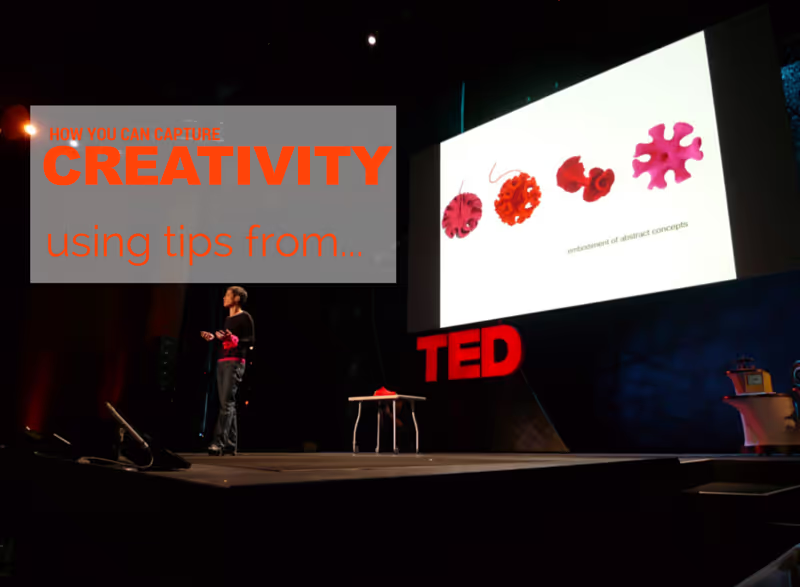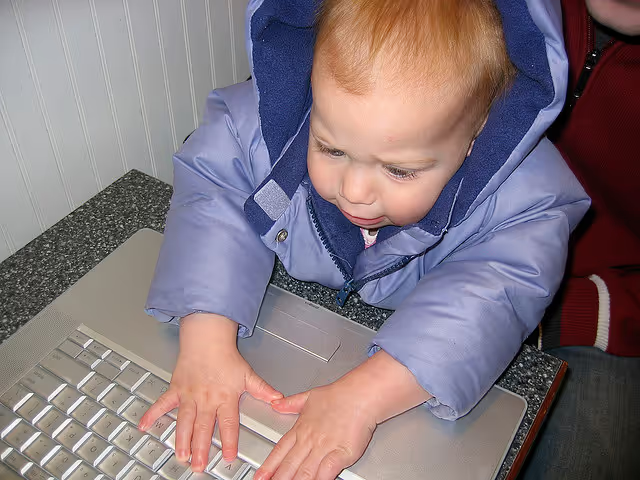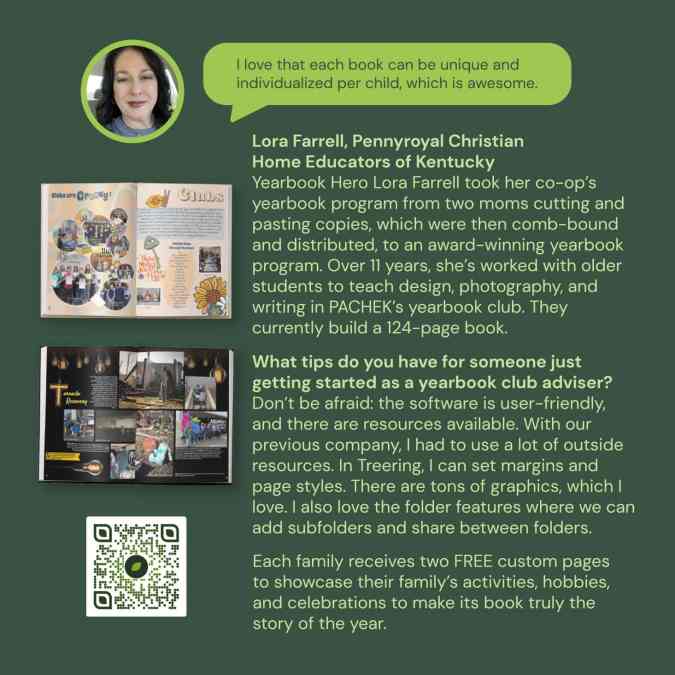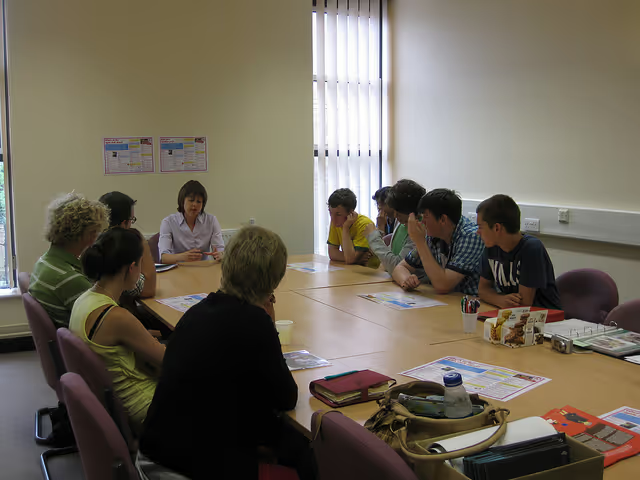Most popular
Subscribe to our blog
Most recent

3 things your yearbook committee must do the last week of school
Note Successes and Failures
As your yearbook committee worked to implement all of your fabulous ideas this year, they built out some awesome content. They also had some serious learning experiences along the way that contributed to making your publication great. Once you send your book to print, set aside a day or two to talk with your committee about what went really well, and what challenges they encountered. Outline the steps they took to make their role within the yearbook committee efficient, and how they worked well with the group as a whole. Focus on what they did to overcome challenges, and how you can utilize these ideas to help the yearbook committee start off on the right foot next fall. From concepts that weren't implemented properly to inconsistencies with project management, this is a great way to learn more about what your committee’s experience was throughout the year, and how you can take your team, yourself, and your publication to the next level in the future.Gather Unused Ideas
With all the brainstorming you did with your team, there are sure to be some leftover ideas that could be totally workable within next year’s book! Work with your yearbook committee to build out a list of these concepts in Google Docs, along with a brief description of how you see each one being executed. This will add context to jog your memory next fall, if the concept sounds a little nebulous in nature. Make a note about this document on your calendar for the fall. This will remind you of your pre-prepped ideas, and ensure that you remember to use them in your first brainstorming session next year!Prepare for the First Month
We all know that the first month of school is one of the most hectic of the year. The best thing you can do to make this month run smoothly is be totally prepared in advance. Which makes right now the perfect time to lay out your first month of activities for when classes resume in the fall! This allows you to plan the rest of the year’s activities when school starts. Work with your yearbook committee to create a timeline based on the successes you had this year. Outline what features should be started right off the bat, and when you need to have your theme determined by. Set up a full schedule for your first month of meetings. This gets you super organized to immediately get next year’s committee focused and on track.Celebrate Your Yearbook Committee!
After you've completed these three end-of-year tasks, it’s important to take some time to have a little fun--and celebrate all of the hard work your yearbook committee put in this year! Plan a fun ice cream sundae party to show your committee how much you appreciate their hard work. You could even move your class outside to enjoy your sundaes with a little fresh air, to boot! Whatever you choose to do, setting aside some fun downtime will make your committee feel totally loved and appreciated. Plus, ending the year on a positive note prepares everyone to come back in the fall ready to make the yearbook committee even more awesome than it was before!
Yearbook ideas: use creative thinking to help students thrive today and beyond
Problem Solving vs. The Right Answer
In school, children are often taught to create work that represents what a teacher wants to see--to 'jump through the hoops,' as it were. Instead of thinking outside the box to come up with unique--and possibly better--solutions to problems, they’re told that there’s only one right answer. This builds a learning environment that stifles innovation. When challenged with coming up with creative solutions, many children don’t even know where to start. Teaching them to unleash their imagination will support strong original content for your yearbook, and also teach your students how to change the way they approach everyday problems in their schoolwork and beyond.Design Thinking is a Process
To infuse creativity into how your students solve complex problems, they have to start by asking the right questions. After identifying a problem, challenge your students to get out into the community to look for answers. This will help them to understand the full scope of an issue and ultimately identify the best solution for a problem. At the beginning, your students will need your guidance to develop questions that get to the root of their story. As they practice, they'll hone their skills to be able to ask awesome questions right off the bat.Don’t Be Afraid to Fail
To apply this line of thought to your yearbook, have your students act like journalists to uncover unique stories for new features within your yearbook. Help them formulate and track questions and responses on a notepad that they can refer back to. As they review their notes, encourage your students to come up with five creative story topics that could result in an extraordinary article for your book. After gathering their data, encourage your students to test out some of the yearbook ideas they came up with. Use a storyboard to lay out what each concept would entail. This style of prototyping will help them make the connection between a great concept, and whether they have enough data to implement the idea. By showing your students how to test concepts out before committing to one, you teach them that it’s ok to fail a few times before they find success. Over time, this inspires them to think outside the box on a regular basis--which creates a more innovative student body as a whole.Creative Yearbook Ideas Go Beyond Today
Developing broader critical thinking skills that inspire kids to go beyond just finding the answer their teacher is looking for does more than support great yearbook ideas. It teaches your students how to be passionate about the work they do. Beyond this, when students are given the creative tools to solve complex problems, they develop a more strategic thought process for approaching their work. This supports their ability to not just succeed, but to thrive after they’re sent off into the real world. Work with your committee to use this concept and come up with unique yearbook ideas that shine. You’ll teach them to have fun with problem-solving, while giving them valuable tools for the future as well!
A fun way to tell your yearbook committee thank you for all their hard work
A Fabulous Yearbook Committee Photo Collage
The thing that I love about this concept is that it celebrates your big accomplishment (the yearbook going to print) while thanking your committee at the same time. And your team will love having something to remember all of the fun they had this year! As you start to select the right photos to use in your collage, remember that this particular piece should focus on the people who have been behind the scenes. Crowdsource selfies from your yearbook committee that were taken while out working on your book. Find silly images that you saved from some of your team meetings. Creating a stunning yearbook can be stressful, but you also had a ton of great times together. Remind your yearbook committee of those amazing, unforgettable moments with the images you choose for your collage.Use Custom Pages
To make your collage a total surprise, use the free yearbooks that you earn through your sales to gift to your yearbook committee members. Before you place the final order, personalize the custom pages of these books with your photo collage! Our drag and drop software makes it easy to quickly add your selected photos to the spread. And since you're already familiar with how to build out pages in our system, creating this custom work of art will be a breeze! Add a few quotes throughout your collage about friendship, either on your own or through the pre-made graphics that are available within your Treering account. Include a lovely header to the top of your collage that thanks your team for their dedication to the project. Since you're adding the collage to the custom pages of the yearbook, you can even personalize this header with each individual's name! With a few minutes' effort, you'll create something that your committee members will cherish forever.Personalize Your Yearbook Committee Thank You
Once you're ready to distribute the yearbooks, make sure you write a nice thank you note on the first signature page. This will always remind them of how hard they worked to help create something wonderful for your school. While they might lose a thank you card, you can be sure they'll keep this memory forever. Plus, this individualized touch will really resonate with your yearbook committee members. Within your note, make sure to:- Personalize the note with specific contributions that each individual made. This will recognize how their efforts supported the yearbook creation process, and why they were a valued member of your team.
- Include a fun memory that goes beyond the work they produced, like a fun outing you had or a particular creative exercise that was memorable. Reference a funny joke they told or that time they let you take the last cookie. This will let them know that you value them for who they are, and not only for the great work they've done.
- End with how excited you are to (hopefully) work with them again next year. This reminds everyone that they can be part of the yearbook committee in the future!

Run your student yearbook committee as an editor, not a peer
Role of the Editor
As the head of the committee, it’s your job to set the strategic vision of your publication. Your team will offer input, but ultimately you have the final say on all of the content that is approved for your book. Within the role of editor, you will be the one setting the direction for your features, scheduling deadlines, and keeping the project on course. This also puts you in charge of reviewing content to ensure it fits with the theme or vision of your yearbook as a whole. Use the tools below to support your success within this role.Delegate the Work
Your students joined the yearbook committee because they want to get involved in the action. So make sure that’s what you offer! Delegate the day-to-day tasks to your team. This includes taking photos for your features, writing the content, organizing the flow of each page and submitting ideas for approval. Once you receive content from your team, you (or a parent volunteer on your committee) should review the copy and send it back for edits and additions. This helps your students to take more responsibility in their work and better understand the publishing process as a whole. When the edited content is re-submitted, do a final review to ensure that it’s what you’re looking for before administering approval.Ask Questions
Instead of just correcting the work your students submit, encourage them to dig deeper on their own. The best way to do this is by asking questions. For example, let’s say one of your students submits a piece on the funny things that go on in the lunchroom, and it falls short. As the editor, it’s your job to figure out what the piece is missing. But instead of just handing that information to the student, ask them basic reporting questions based on the old 'who, what, when, where, and why' adage to get their minds thinking. This encourages them to deepen their investigative skills and turn in their next story with full details from the start.Stick to Deadlines
Getting your content completed on time is essential. When one person falls behind, it affects the entire team. To prevent an inadvertent domino effect, stress the importance of your deadlines on a weekly basis. Make sure you’re checking in on projects well before they’re completed to ensure that your yearbook committee is staying ahead of the content that needs to be created. When students fall behind, try to figure out why -- and how you can help them change their workflow to get subsequent assignments in on time. The more important you make deadlines, the more your students will adhere to them. And that can help them not only in yearbook class, but in their schoolwork from here through college.Managing Your Yearbook Committee
No matter who is on your yearbook committee, it’s important to recognize that as a coordinator, you’ll be the last person to see content before it goes to press. Building the right leadership skills to take on the editor role helps your students present their best work, while also making your job a lot easier. Follow these steps to better manage your team and develop the best content your school has ever seen. I know that’s going to get you great results in the print version of your yearbook!
The elementary school yearbook: 3 awesome places to grab the best photos
Create an Easy-to-Use Guide
To help your team, you need a quick-access guide that can easily be updated as new ideas and photo opportunities come to mind. Detail out simple photography tips that are applicable on the go. Your list should be short and to the point. While you want to offer pertinent information, you also don’t want to overwhelm them with too many details. Keep in mind that most of your teachers use their smartphone camera for images. Use our photography guide as a starting point to pull together some fantastic tips that your teachers can easily use. This type of guide is a situation where Google Docs can again be super handy. You can share and update your information without re-sending a new document with every change, and quickly share photo ideas when new events are coming up. Additionally, your Google Doc is accessible when your volunteers are mobile, which means they don’t have to worry about remembering all of your tips at a moment’s notice. This type of document is the most efficient way to provide the best information and keep your team --and the teachers working to support your content--informed.Offer Great Photo Concepts
Offering direction in your quick photography guide goes beyond just giving your team tips on taking great photos. You should also include awesome inspiration on where to take the most fabulous shots! Think about this from the perspective of the teacher, and where they’ll be grabbing photos of your students. Then add some examples of where to watch for photo opportunities. This will ensure that you don’t just get random shots of students milling about, but build a base of images that contribute real value to your elementary school yearbook. You should make your ideas specific to the types of events and expeditions at your school, but here are a few of my favorites to get you started.- Field Trips: Look for ways to grab shots of hands-on learning experiences that kids will love reliving. These are the types of events that show parents how their child learns, which communicates more value from the programming on your campus. These photo ideas could include participating in an experiment at the science museum, petting undersea animals at an aquarium, or even images of your class taking a snowboarding lesson together.
- School Fundraisers: A highlight for many kids, school fundraisers are an important part of your school-community interaction. Look for opportunities to grab group shots of students enjoying themselves at the fundraiser. For example, a school carnival is a great place to take photos of students experiencing fun game booths and enjoying cotton candy. This is also an excellent way to promote your school fundraisers--the more everyone can see the fun kids are having, the more people will want to participate next year!
- In-Class Events: Special in-class learning events make for fantastic yearbook content. Grandparents' Day, a historical wax museum, and class parties are all perfect places to get some fabulous photos. In these instances, showcasing the special day in story form is ideal. Grab a few shots of the event set-up, students participating in activities, and a final group shot of what your class created. This shows the full range of what went into the event, and is a lasting way to memorialize big happenings at your school.
Make Your Elementary School Yearbook Brilliant
The more hands you have to take great yearbook photos, the better your content will be. You simply can’t be in all of these places at the same time, because your yearbook isn’t your full-time job (plus, there's only one of you)! Encourage other staff to get involved, and remind them how much excitement they’ll spur when their students see all of these memories encapsulated in the book at the end of the year. Then, offer them your great tips to make it easy to get the best photos possible. This is the perfect way to take your yearbook content from good to totally brilliant!
Build your yearbook committee: how to get the best parent volunteers
Satisfy Volunteer Hours
Teachers and parents alike overwhelmingly agree that parent volunteers are not only necessary, but they also create positive results in schools. Volunteering shows children that their education is important and worthwhile, and shows their parents care. As such, there’s a lot of expectation around volunteering at the school--and that can work in your favor. Work with your school administration to make the yearbook committee one of the volunteer opportunities that parents are offered on a regular basis. Remind parents that volunteering for your yearbook committee can be an excellent way for them to dedicate some of their time back to the school. The multitude of responsibilities ensures that there's something for everyone, and a somewhat flexible schedule can accommodate the parents that would otherwise have conflicts. As an added bonus, their work will help to capture the best memories throughout the school year--and that’s something that directly benefits every volunteer!Build Camaraderie
Parents, especially those with young children, are generally looking to build a connection with other adults at their child’s school. Working with other parents on the yearbook committee is a great way for them to lay the foundation for new relationships and build a sense of community across your campus. These are the bonds that last for years to come, so as you’re telling parents about all the great things that come with participating on the school yearbook committee, remind them of all the new friendships they can make while building something great for their kids.Have Reasonable Expectations
The role of yearbook coordinator isn’t one that switches hands frequently--which means you’ll probably be in charge of the yearbook committee again next year. Remember that the experience parents have working with you now will affect not just their own future participation, but that of other moms and dads that they’re friends with. This makes it important to have reasonable expectations of your volunteers. Make sure you split work up evenly, that you have a backup plan for parents who get too busy to commit a lot of time to your project, and that you make the process fun (including bringing treats to meetings!). It can also be helpful to encourage parents to work on different features and sections in smaller groups when they have free time. The more enjoyable the experience is, the more likely it is that parents will come back next year--and possibly even recruit some extra talent for your team in the future!Communicate About the Yearbook Committee
Finally, it’s important that you let parents know about your volunteer opportunities frequently. Here are three awesome ways to connect with parents about investing some time with the yearbook committee:- Include details about your open committee positions in the school newsletter. Parents read these items frequently; it’s one of the easiest ways to stay in front of the right audience on a regular basis.
- Host a table at the school entrance during conferences. This is a popular night for parents to check out everything that the school has to offer, and provides a tangible way for you to connect face-to-face.
- Send home notes in their take-home folder. Parents review this very spot in their child’s backpack on a nightly basis. It’s a great way to stay front-of-mind when you’re hunting for new volunteers on your committee.

Yearbook creativity: fun icebreakers & activities keep ideas fresh
Go Against the Norm
To come up with yearbook ideas that are outside of the box, you have to train your committee to think differently. Start by helping them open their minds to doing traditional things in new ways. Assign each person a task within the yearbook that’s totally outside of their comfort zone. For example, you could have a really great writer learn how to use photoshop, and practice editing the school band photos. Or encourage one of your photographers to draw a few illustrations that would compliment your content and your theme. While their work doesn’t have to wind up on the final pages of your publication, it will give them the opportunity to see the book from a totally different perspective. And that can be just what your team needs to get some serious creativity flowing!Free Associate
Sometimes you need to get your mind refocused to create original yearbook ideas. Use this activity regularly--it would even be a superb warm-up at the beginning of each class or meeting! To get started, all you need is a dictionary. Open the book up and select a word at random. It doesn't need to have anything to do with your yearbook theme or content--you just want to engage your team's creativity. Now ask everyone to start listing off all the things they associate with that particular word. It could be thoughts, activities, phrases, colors, smells, memories--the sky really is the limit! The one thing to remember: no suggestion is a wrong suggestion. And don’t forget to write down some of the great ideas on the board at the front of your room, as this brainstorm could easily spur some unique content for your book. The more you play it, the more you’ll see their creativity start to shine through--and that will definitely carry through to their work on the pages of your book.Get Outside for Great Yearbook Ideas
Sitting in the same room every time you work on the yearbook can be a little stifling to your committee’s creativity. To spur great yearbook ideas, you need to get your team into a fresh environment every once in a while. When you do this, it’s important to have a mission to keep everyone examining and absorbing their surroundings for new ideas. If you take your committee out to watch a football practice, have them come up with a list of twenty creative words that describe what they see--then work those words into a short poem that they can read to the group the following day, or use as captions within the football spread of your book. If you take them outside, ask them to find three nature-inspired objects that you can use as a team to create a fun nature collage. When you get them thinking creatively outside of the classroom, this can carry over to how they absorb the world on a regular basis. Before you know it, your team will be producing amazing concepts nonstop! While these types of activities may not directly create the final content that winds up on the pages of your yearbook, they will definitely help your team find a way to refocus their creative energy. And this is exactly what will bring out the kind of inventive yearbook ideas you’ve been looking for!
Brainstorming ideas: promote creativity and get your team to produce better ideas
Always Be Prepared
When you’re looking for the best brainstorming ideas to use with your yearbook team, the first thing I like to do is explain how great ideas don’t always come in the middle of a brainstorming session. They can really strike at any time of day - which means you have to be prepared to capture them on paper, lest they be completely forgotten an hour down the line. Encourage your students to always carry a little notebook and pencil to jot down quick ideas. Not only is this a great way to make sure you don’t miss any of those moments of brilliance, it can help them learn how to better brainstorm on their own outside of yearbook class!Make Everyone’s Voice Matter
Some students struggle with big idea sessions not because they aren’t coming up with awesome concepts, but because they’re nervous about having their idea shot down by the rest of the team. To encourage everyone on your yearbook committee to contribute their thoughts, you need to set up an environment where everyone is heard and every voice counts. To do this well, don’t brush off any ideas when they’re being contributed. Instead, write everything down on your whiteboard or a giant pad of paper as you’re brainstorming ideas. This way, students can see their contributions being added to the list. And that can really help them to feel like their ideas matter - which can encourage them to continue contributing as the year progresses.Talk Through Ideas
Once you’ve spent some time brainstorming ideas, talk through each one so with your students to get a better idea of how they’d actually implement them with your yearbook. This can give everyone the opportunity to understand the full scope of a concept. Plus, creating a group discussion around each item can help you build out a really amazing idea from a concept that might have seemed like the wrong fit when you first heard it. At the end of your session, askyour students to help you select the top three to five ideas that will contribute towards a more cohesive yearbook. This way no one is excluded and you can wrap up your brainstorming sessions on a positive note.The Best Brainstorming Ideas
Coming up with great ideas isn’t something that always happens in the blink of an eye - which is why hosting regular brainstorming sessions for your team throughout the school year can really help you integrate more creativity into the overall design and content of your yearbook as a whole. Fostering an environment that makes all of your yearbook committee feel comfortable contributing their thoughts is the best way to get great ideas from your team. Not only that, but you’ll find that doing this will help to build a stronger sense of camaraderie across your team, which can help your students to work together more naturally, become more adept at bouncing ideas off of each other and ultimately create an amazing yearbook for your school.
Back those up: the importance of yearbook photo backup files
Photo credit: Flickr CC user Daniel Morrison[/caption] These days we have the ability to take thousands of photos with the simple click of a button. With digital cameras and smartphones getting more sophisticated every year, everyone can now capture every magical moment a hundred times over. However, it can all come crashing down–literally–with one wrong click. Back in the day, we only had film negatives to fall back on if things went awry during production. I remember several late nights pouring over hundreds of negatives to try to see if I could hunt down the right one. Squinting and trying not to expose them to too much light, my fellow staffers, and I would jump for joy when we found the right batch. Thankfully students today will never have to experience this frustration. There are many different ways you can backup ALL your files–photos, word docs, everything–and not pull all your hair out in the process. To ensure all of your student’s hard work doesn’t accidentally get deleted forever, install a backup plan into each assignment. Make sure to teach your students how to save their photos and word documents in multiple locations so no one is freaking out when they’re up against a deadline, and they can’t find their photo files. Here are some ways you can backup your precious yearbook photo files and not lose any sleep in the process:
- Online backup – Saving photos to online sites like Flickr or Shutterfly means your photos are safe somewhere on the internet. You can set up a private account with limited access to the yearbook staff so outside sources cannot steal or use your images without your permission. You can also create a Dropbox account and store and share files that way as well. You can even create a special yearbook Facebook account and tag photos on there too–just make sure to adjust your settings to private so others can’t see what you’re working on.
- External drives – When in doubt, download your photo files to an external hard drive. You can download and save as many as you want, ensuring that the files aren’t just in the hands of one student. It’s quick, painless, and instantly takes the pressure off of one person. Make sure you clearly label all your photos on your computer before you download them to the external drive so whoever is working on the next feature knows exactly where to find them.
- Hard copies – Call me old fashioned, but I’m a big fan of paper. If you’re really worried about losing files, you can always print out hard copies of the photos in question and file them away. Visual prints can also help jog your memory when you’re physically laying out designs. You can print them out on your classroom printer or send your files to a company that can print them out for you.

75 awesome yearbook interview questions for students
What Types of Yearbook Interview Questions Really Work?
There are three types of questions you should be asking in student interviews: surveys, anecdotes, fishing for quotes. Survey These are the lifeblood of your book. Questions can range from “what was the song of the year?” to “which member of your class would win the presidential election?”. These are fun questions, great for putting students at ease, for building trust before asking them to share personal opinions and anecdotes. Anecdote Here, you’re looking for stories. Once a student is comfortable (after you’ve asked survey questions), you’ll want to ask questions that will elicit elaborate responses chocked full of personality. The more long winded, the better (they can be culled). Asking for anecdotes won’t just give you unique insights from the student perspective: it’ll give you insight as to the events that demand more coverage from yearbook staff, too. Fishing for Quotes Distilling your school’s most important events into tweet-length bits gives your yearbook some punch. It’s likely many of them will be hilarious, not serious and that’s okay: quotes don’t have to be profound, they just need to capture moments. Who knows: maybe a student will say something that perfectly captures your school’s milieu this year. Whatever you do: avoid yes or no questions at all costs. Binary questions devalue opinions in favor of convenience; only the most gregarious students will overshare. You want your yearbook to be diverse, offering as many different personalities as it possibly can.Yearbook Interview Questions: A Complete List
Without any context, your yearbook is just a photo album. That isn’t necessarily a bad thing. Pictures are great. They’re absolutely the first things students will look at. But aside from a few amazing images, they're not the stuff people are going to talk about. It’s the written context—the stuff people read and learn when they open the book—that really resonates. To get that, you need yearbook interview questions that will get your students, teachers, coaches, and administrators to open up. Here are 75, separated by category, to get you started: High School Student Life- Do you drive to school? What was your most listened to driving song on your morning commute this year?
- Which school tradition are you most proud of?
- Would students be more productive if cell phones were banned during school hours?
- What’s your favorite school lunch?
- Should the school have (or keep) vending machines?
- Do you think an open campus is a good idea?
- What’s your most embarrassing in-school memory? What happened and did you learn anything from it?
- Which event did you most look forward to this year? Did it live up to expectations?
- You can bring any three of your classmates on a cross-country road trip in your family’s hatchback: who would you choose and why?
- If you could get rid of the bells between classes, would you? Why?
- How did you decorate your locker this year?
- How do you avoid participating in gossip? What do you do if there’s gossip about you?
- Which event at field day was the most fun?
- What was the coolest art project you did this year?
- If your school grew and maintained its own vegetable garden, what would you want to grow?
- If you could plan a field trip anywhere for next year, where would you want to go?
- How do you like to read? (physical books, Kindle, etc.)
- What’s your favorite kind of juice?
- If you and your friends could do any activity after school today, what would it be?
- What’s the best game or sport that you play in gym class? Why is it so fun?
- What’s your favorite school snack?
- If you could choose any animal for a class pet, what would it be?
- Which team’s games are the most fun to attend? Why?
- If you could have the pep band play one song at games, what would it be?
- Describe your crosstown rivalry in one (appropriate) word...
- Which sport does the school need to add next year?
- If anyone in your class would be on ESPN, who would it be?
- What was the most memorable school sporting event of the year?
- How does playing X impact your academic performance?
- What life-lesson(s) did you learn playing X?
- Will you try to play X in college?
- Would you ever consider coaching?
- Do you think participation in extracurricular activities should be required by the school?
- If your club was given an unlimited budget to throw an event for the school, what would you plan?
- Should video games be considered a sport? Which games? Would you join a school eSports team?
- If you could create one new club for next year, what would it be?
- Who’s the best club adviser?
- Where does your club meet? Do you use any school resources other than space? How could the school provide more support for your club?
- Which plays should the school produce next year? Would you audition if it was something you liked?
- If you could choose any artistic medium and give it a dedicated course, what would it be?
- The jobs you will have one day don’t even exist yet: what kinds of skills do you think you might need to succeed?
- Least memorable United States President?
- Are there enough foreign language options? If not, what would you like to see added? Should they be required?
- What project or assignment challenged you the most as a student? Why?
- Most useful math equation or theory you learned this year?
- What was the longest paper you wrote this year? Who was it for? What was it about?
- If you could conduct any science experiment in a class, what would it be? Do you have a hypothesis ready to go?
- What was the most enjoyable book you had to read for school this year?
- Which subject do you think prepares you most for life after high school? Why?
- Which TV show is most talked about in the hallways?
- What would you be SO embarrassed to be seen wearing (but secretly love)?
- Which meme/gif did you use most frequently this year?
- Which movie that came out this year would you be most embarrassed to watch with your family?
- Which professional sports team were you most excited about this year?
- Which presidential candidate would you vote for?
- If you were in charge of planning a concert for the school, which three artists would you bring?
- What’s your favorite Snapchat/Instagram filter?
- Most social media savvy teacher?
- How can teachers make social media part of their curricula?
- If you could only use one emoji for the rest of high school, which would you choose? (Be sure to check these for appropriateness.)
- Do you have your own website? How did you make it? What do you use it for?
- Which piece of technology has most contributed to your academic success?
- What was the most “viral” event of the school year?
- How would you recommend the school use its technology budget? What kinds of devices or software would you like to see available next year?
- Would you be more likely to read or contribute to the school newspaper if it was digital?
- What’s your favorite podcast? Is there any way teachers could incorporate it into their classrooms?
- If you applied, when did you start your college applications?
- What made you decide not to go to college next year?
- Describe your senior year in three words.
- If you could create one mandatory course for future seniors, what would it be?
- “I will always remember…”
- Should there be a community service components involved in graduation (X number of hours, a project, etc.)?
- Who was your favorite teacher throughout all of high school?
- If you could change one school rule, what would it be?
- Where do you see yourself in 10 years?

How to create a personalized homeschool yearbook
Yearbooks are for every student, not just those who attend brick-and-mortar schools. In fact, parent-led home-based education may currently be the fastest-growing form of education in the United States. That makes for a lot of memories to capture!

With the unparalleled flexibility of Treering Yearbooks, it’s never been easier for homeschool families and organizations to effortlessly create a personalized yearbook for each student, capturing the essence of their unique educational journey. We remove the guesswork and simplify the yearbook process for everyone involved. Here are a few yearbook perks that Treering offers to homeschools:
1. No hidden fees, no surprises. Our per-book price is all-inclusive, covering everything from easy-to-use software to friendly support and custom covers featuring your child’s artwork or family photo.
2. No minimum order requirements. Whether you only need one book or many, Treering can accommodate your needs. We’ll even provide a code so grandparents can purchase, too.
3. No contracts. You're never locked into working with us. We believe in our service, but you can walk away anytime (although we're confident you won't want to!).
4. No deadlines. Not working on a traditional timeline? Same here. Treering empowers editors with the flexibility to control and change their print-ready date at any time without incurring fees. Our three-week turnaround means you’ll receive your masterpiece in no time.
5. No set page count. Treering allows for creating a yearbook with as few as 20 pages. You can even adjust your page count as the school year - or a fun last-minute field trip - dictates.
6. Free custom pages: If you create a book for multiple students or just one, each can become a personalized keepsake. Capture milestones, family vacations, extracurricular activities, art projects, and more inside each student's unique copy.

Discover the Ease of Treering’s Software for Homeschoolers
While all of the above advantages benefit homeschool communities, Treering’s easy-to-use software is one of our most important - and most loved - features. Our intuitive, drag-and-drop yearbook builder makes it easy to craft a beautiful yearbook. Choose from hundreds of professionally-curated themes, or unleash your creativity and design your own.

Need help managing your yearbook committee?
- Don’t be one of those unorganized clubs that meets at irregular or sporadic times. Create a weekly or bi-weekly meeting, same day and time, and make it known that everyone needs to attend. The most accomplished clubs are the ones that set rules and expectations up front, so people know what is coming and there are no surprises. Create a contract that each committee member will sign when they join. It can be a simple document clarifying that being a part of yearbook committee is a commitment, and they will need to put in the work. You don’t need to come off like a dictator, you can keep it light and even humorous… but everyone needs to know that you mean business.
- Create an organizational chart to facilitate a chain of command. People shouldn’t feel like there is a pecking order, but there does need to be structure. Illustrating this diagram will show connections within the group – who will be working with whom, who will have the final say, and more. To keep things diplomatic, you can hold it to a vote when assigning team leaders. There could be a leader for each part of the yearbook, such as: photography, writing, design, layout, and so on. While there may be smaller groups, make it clear that you are one entity, and make sure to bring everyone together at the weekly meetings.
- It’s important to keep everyone busy and feeling like they have something to do. The moment someone gets bored or feels undervalued is the moment things start to unravel. This can have a chain reaction, and you may start to lose focus from the entire group. People may even start to drop out of the committee. Therefore, make sure that roles and responsibilities are clear. Similarly, when people are working hard without acknowledgment, their work can start to deteriorate. Always take an interest in what each person is doing and provide positive, sincere encouragement.
- Keep attitudes in check. The only thing worse than boredom is negativity or arrogance. This book is supposed to be fun, so don’t lose sight of that. There should be no tolerance for people copping bad attitudes with one another, trying to steamroll others, or becoming bossy. This will bring the whole group down and can bring the whole yearbook down, too.
- Create a culture, not a cult, within your committee. It’s okay for people to have wild ideas or become very passionate. That shows that they care and are committed to the cause. It’s guaranteed that your committee will have some pretty lively personalities, so let them shine. What one person sees as a crazy idea might just spark some insights within the rest of the group, so keep the creative ideas coming. This can help ideas flow, and ultimately lead to a supreme yearbook. Encourage friendship and teamwork within the group. Hold a “secret Santa” during the holidays, order in food for the team on Fridays (taking time to eat together can boost your bond and make members feel appreciated), take a field trip, etc. This will help create commonalities between the committee members and will foster bonding, which can only help your end product.
- Try your best for retention. Not everyone in the committee will be graduating seniors, so when you find a good group, try to hold onto them. Boost participation from year-to-year. Use strong committee members as a source of marketing material. Word-of-mouth is very popular in school, so encourage them to tell their peers about yearbook. Hold a meeting toward the end of the school year where you personally meet with students and talk about yearbook committee. You can make it more of a “party,” pass out food, prizes, play music… keep it interesting and fun.







